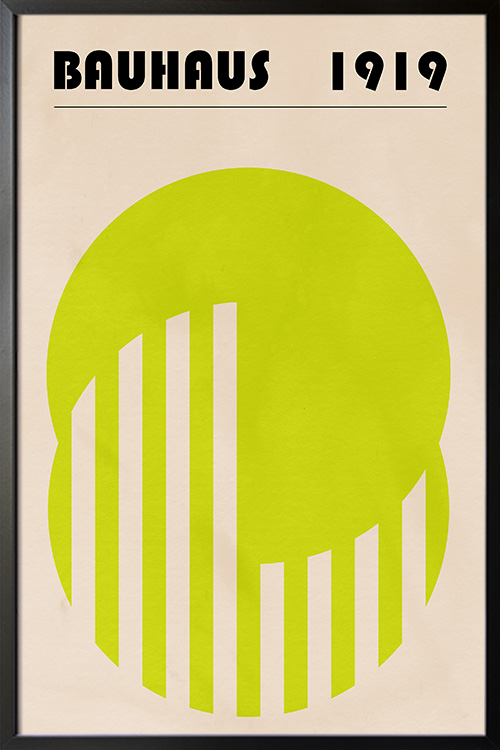
Bauhaus Inspired 1919 No. 1 art print featuring an abstract geometrical circular figure in a calming light green hue. This piece is perfect for adding a pop of color and a hint of artistic flair to any room. Whether you’re a fan of minimalist design or simply looking to add a touch of style, this print is sure to make a statement.haus Bloom 3, a modern masterpiece that exudes sophistication and style.
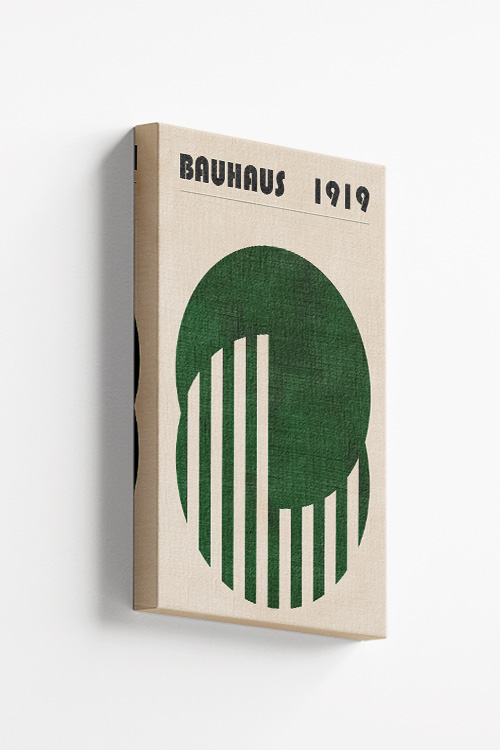
Bauhaus Inspired 1919 No. 3 is an abstract geometrical circular figure in green is sure to catch the eye of all your guests. With its clean lines and minimalist design, this piece is the perfect addition to any contemporary home. Let this artwork inspire you to think outside the box and add a pop of color to your decor. Upgrade your space with the Bauhaus Inspired 1919 No. 3 today and watch as it transforms your room into a stylish and sophisticated oasis.
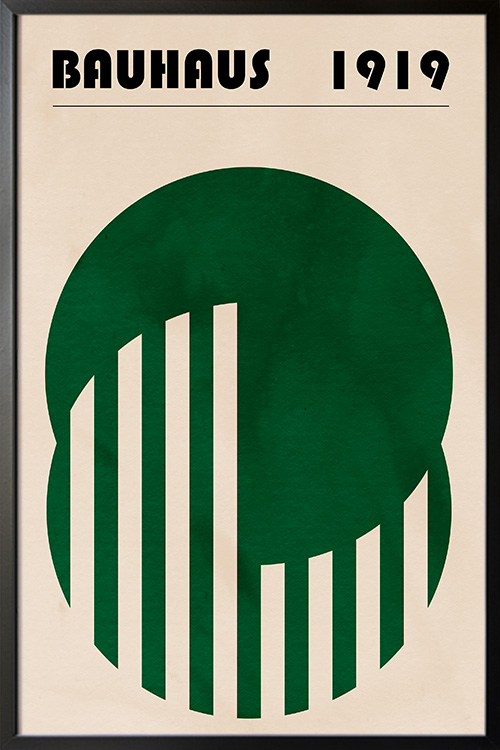
Bauhaus Inspired 1919 No. 3 is an abstract geometrical circular figure in green is sure to catch the eye of all your guests. With its clean lines and minimalist design, this piece is the perfect addition to any contemporary home. Let this artwork inspire you to think outside the box and add a pop of color to your decor. Upgrade your space with the Bauhaus Inspired 1919 No. 3 today and watch as it transforms your room into a stylish and sophisticated oasis.
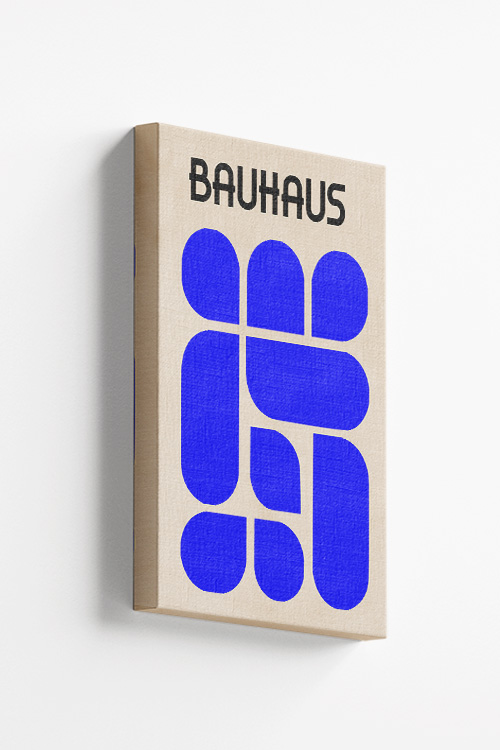
Bauhaus Inspired Blue features a unique line that incorporates abstract geometrical figures in varying shades of blue, creating a visually stunning and dynamic aesthetic. Whether you’re a fan of clean lines and minimalist design or you prefer a more eclectic and artistic approach, this piece is sure to make a statement in any room. So why settle for bland and boring décor when you can add a pop of color and creativity with our Bauhaus Inspired Blue collection? Upgrade your space today and let your personality shine through!

Bauhaus Inspired Blue features a unique line that incorporates abstract geometrical figures in varying shades of blue, creating a visually stunning and dynamic aesthetic. Whether you’re a fan of clean lines and minimalist design or you prefer a more eclectic and artistic approach, this piece is sure to make a statement in any room. So why settle for bland and boring décor when you can add a pop of color and creativity with our Bauhaus Inspired Blue collection? Upgrade your space today and let your personality shine through!

Bauhaus Dot Blue print is a unique piece that features line art of geometric figures with a striking blue dot at the center, adding a touch of color and intrigue to any room. Perfect for those who appreciate clean lines and minimalist design, this print is sure to spark conversation and admiration from all who see it. Whether displayed in a gallery wall or as a standalone statement piece, the Bauhaus Dot Blue print is a must-have for those with an eye for contemporary art. Add a touch of sophistication and style to your home with this one-of-a-kind print today!

Bauhaus Dot Blue print is a unique piece that features line art of geometric figures with a striking blue dot at the center, adding a touch of color and intrigue to any room. Perfect for those who appreciate clean lines and minimalist design, this print is sure to spark conversation and admiration from all who see it. Whether displayed in a gallery wall or as a standalone statement piece, the Bauhaus Dot Blue print is a must-have for those with an eye for contemporary art. Add a touch of sophistication and style to your home with this one-of-a-kind print today!

Seeking a unique and contemporary piece of art to add a touch of style to your space? The Bauhaus Dot Green print is a cool design featuring sleek line art of geometric figures, with a bold green dot nestled within. The combination of clean lines and vibrant color adds a pop of personality to any room, making it the perfect statement piece for your home or office. Whether you’re a fan of minimalist decor or just want to add a touch of contemporary flair, this print is sure to catch the eye of all your guests. Upgrade your space today and let your style shine!
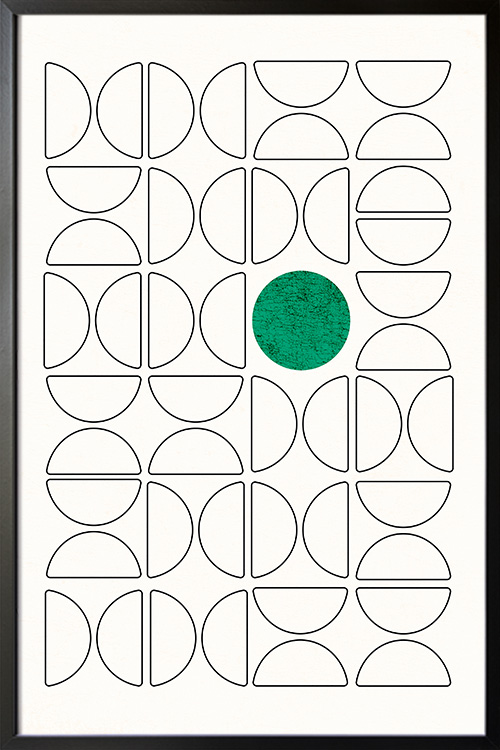
Seeking a unique and contemporary piece of art to add a touch of style to your space? The Bauhaus Dot Green print is a cool design featuring sleek line art of geometric figures, with a bold green dot nestled within. The combination of clean lines and vibrant color adds a pop of personality to any room, making it the perfect statement piece for your home or office. Whether you’re a fan of minimalist decor or just want to add a touch of contemporary flair, this print is sure to catch the eye of all your guests. Upgrade your space today and let your style shine!
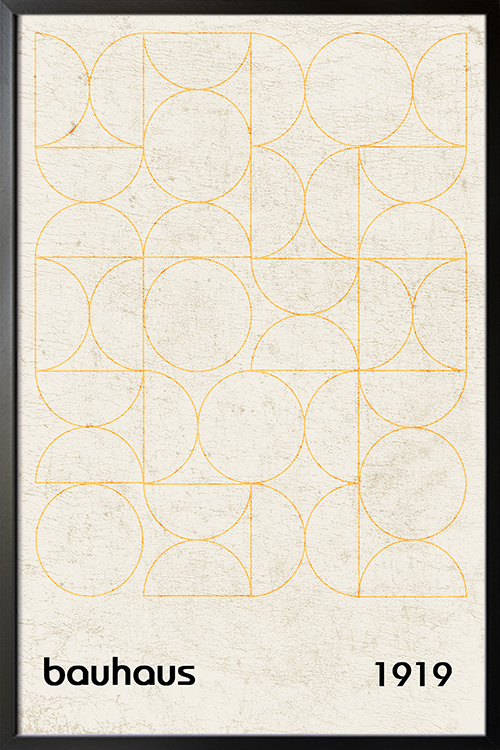
Bauhaus Inspired 1919 No. 4 art print is a minimalist geometric abstract piece is sure to bring a sleek and sophisticated vibe to any room. With its clean lines and bold shapes, this print is a perfect way to add a contemporary flair to your home or office. Whether you’re a fan of the classics or just looking to freshen up your decor, this print is sure to make a statement. So why wait? Add a touch of Bauhaus style to your space today with our 1919 No. 4 art print!














